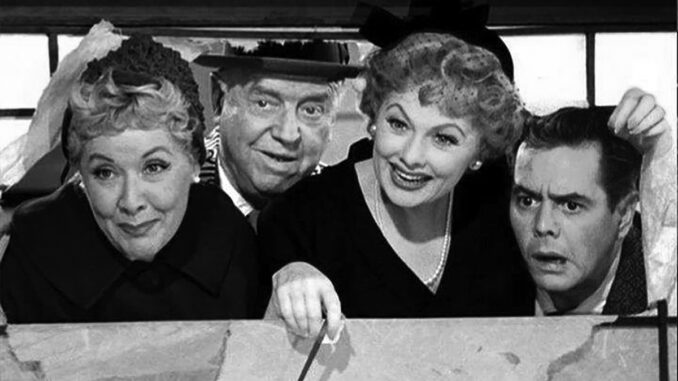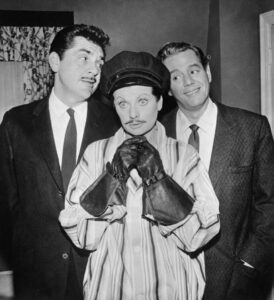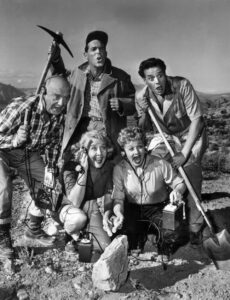
Introduction: A Comedy Legacy’s Final Bow
How does one of television’s most iconic shows wrap up after redefining comedy? For I Love Lucy, the answer wasn’t a simple curtain call—it evolved into The Lucy-Desi Comedy Hour. This spin-off series represented both the zenith of Lucille Ball and Desi Arnaz’s comedic partnership and the beginning of their bittersweet farewell. But what exactly happened during this final chapter, and why does it remain such a fascinating yet complex part of their legacy? Let’s dive deep into the truth behind The Lucy-Desi Comedy Hour.
What Was ‘The Lucy-Desi Comedy Hour’?
The Lucy-Desi Comedy Hour was more than a continuation; it was a reimagining of the I Love Lucy format. Running as 13 hour-long specials between 1957 and 1960, it shifted away from the cozy Ricardos’ New York apartment adventures to high-budget, star-studded episodes.
A New Format for a Changing Era
Instead of weekly half-hour sitcoms, the show adopted a special-event style. Each episode brought big-name guest stars like Bob Hope, Milton Berle, and even Fred MacMurray, making it a spectacle designed to grab prime-time audiences.

Why the Change?
By 1957, I Love Lucy was a global phenomenon, but Ball and Arnaz felt the grind of weekly production. The longer episodes allowed them to scale back their workload while still delivering the laughs audiences craved.
Behind-the-Scenes Drama: A Marriage in Trouble
If the show itself sparkled with comedic genius, the reality behind the scenes was anything but. By the time The Lucy-Desi Comedy Hour debuted, cracks in Lucy and Desi’s marriage had become impossible to ignore.
Tensions on Set
The professional demands of running Desilu Productions combined with personal conflicts led to frequent on-set arguments. The chemistry that made the Ricardos so beloved began to falter as Lucy and Desi’s relationship unraveled.
The Impact of Fame
Fame brought both financial success and immense pressure. While the pair’s public image remained polished, the private toll of maintaining their empire strained their bond.

Star-Studded Guests: The Show’s Biggest Selling Point
The guest appearances in The Lucy-Desi Comedy Hour set it apart from its predecessor.
Hollywood Royalty Joins the Fun
Stars like Tallulah Bankhead, Red Skelton, and Danny Thomas added a unique flair to each episode. Their interactions with Lucy often created comedic gold, blending Hollywood glamour with sitcom hilarity.
Balancing the Spotlight
While the guest stars drew viewers, some critics felt their presence overshadowed the Ricardos. The delicate balance of keeping Lucy and Ricky central to the narrative wasn’t always achieved.
Critical Reception: Mixed Reviews and Fading Magic
While The Lucy-Desi Comedy Hour attracted massive viewership, critics weren’t always kind.
The Challenge of Change
Fans loved the original I Love Lucy for its simplicity and relatability. The new format’s glitz sometimes felt at odds with what made the Ricardos so endearing.
Moments of Brilliance
Despite its challenges, the show still delivered iconic moments, such as Lucy’s hilarious escapades in a Parisian fashion show and a chaotic fishing trip with Fred and Ethel.
The End of an Era: Why the Show Stopped
The conclusion of The Lucy-Desi Comedy Hour wasn’t just the end of a series; it marked the dissolution of Ball and Arnaz’s partnership—both professionally and personally.
The Final Episode
The series finale, “Lucy Meets the Moustache,” aired in 1960. The title might have been playful, but the atmosphere on set was anything but. Shortly after filming, Lucy filed for divorce.
Desilu’s Legacy
Despite the heartbreak, Desilu Productions went on to produce groundbreaking shows like Star Trek and Mission: Impossible, cementing Ball and Arnaz’s influence on television history.
Why ‘The Lucy-Desi Comedy Hour’ Still Matters
Decades later, this final chapter of I Love Lucy continues to resonate.
A Window Into Hollywood History
The show captures a unique moment in television’s golden age, blending sitcom traditions with the star power of Old Hollywood.
The Power of Lucy and Desi
Even as their marriage crumbled, Ball and Arnaz’s comedic timing remained impeccable, showcasing their enduring talent.
Fun Facts About ‘The Lucy-Desi Comedy Hour’
- Lucy’s Real Pregnancy: During the show’s run, Lucy was pregnant with her second child, Desi Jr., a storyline incorporated into I Love Lucy.
- On-Screen Chemistry: Despite their real-life struggles, Lucy and Desi’s performances never betrayed the turmoil behind the scenes.
- Guest Star Gossip: Tallulah Bankhead’s episode is infamous for its off-screen feuds, adding drama to the production.
- High Budgets: Each hour-long episode cost significantly more than a standard I Love Lucy installment.
- Post-Divorce Collaboration: Despite their split, Lucy and Desi occasionally worked together on projects, proving their professional bond endured.
Conclusion: The Bittersweet Legacy of ‘The Lucy-Desi Comedy Hour’
The Lucy-Desi Comedy Hour wasn’t just a continuation of I Love Lucy—it was a testament to the resilience and creativity of two television pioneers. While it marked the end of an era, it also solidified Lucy and Desi’s place in entertainment history. The laughter may have been tinged with sadness, but the joy they brought to millions remains timeless.
FAQs
1. Why was The Lucy-Desi Comedy Hour created?
To reduce the workload of weekly sitcom production while still providing high-quality entertainment to fans of I Love Lucy.
2. Did Lucille Ball and Desi Arnaz divorce because of the show?
The show wasn’t the direct cause, but the pressures of their personal and professional lives contributed to their split.
3. What made The Lucy-Desi Comedy Hour different from I Love Lucy?
Its hour-long format, celebrity guest stars, and bigger production budgets set it apart from the original sitcom.
4. Was the show successful?
Yes, it attracted large audiences, but critics had mixed opinions about its departure from the original’s charm.
5. Are the episodes still available to watch?
Absolutely! Fans can find The Lucy-Desi Comedy Hour on streaming platforms and DVD collections.
